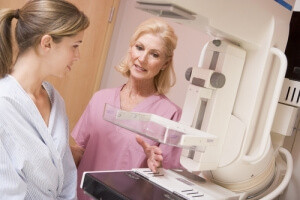 Is it time for your mammogram? Are you due for a pap? Let us help you take control of your health. We offer a variety of services including IUD’s, colposcopy, and more. It is as important as ever to be sure you receive your yearly wellness exams.
Is it time for your mammogram? Are you due for a pap? Let us help you take control of your health. We offer a variety of services including IUD’s, colposcopy, and more. It is as important as ever to be sure you receive your yearly wellness exams.
Mammograms are unpleasant. Despite the many advances made in medicine and treatment, mammograms ultimately result in the breast being pressed very hard to compress the tissues and allow for an accurate picture. However, this has not kept the Surgeon General and various associations which are dedicated to curing breast cancer from recommending that women have yearly mammograms. While the techniques used in new mammograms have decreased discomfort, all women should be getting a normal mammogram at least once a year after they reach 40.
What is a Mammogram?
Mammograms come in a variety of styles, but they all focus on compressing the breast tissues to allow the doctor to look for certain indicators of disease or masses in the breast tissue. The doctor is not always able to tell just from an initial mammogram whether a mass is cancerous or not. Often times, further examinations such as ultrasound mammograms and biopsies will be conducted to ensure that masses found are not malignant.
What is the Benefit to Getting an Annual Mammogram?
The greatest benefit to obtaining a regular mammogram is that the mammogram can lead to the early detection of breast cancer. According to Cancer.gov, early detection reduces the number of fatal breast cancer incidents significantly, particularly in women who are over age 50. Failure to diagnose breast cancer at an early date can lead to a lower successful and effective treatment rate, as well as increased likelihood of the cancer spreading and leading to death.
What are the Risks of Mammograms?
Like all methods of screening cancer, the success rate of mammograms is not 100 percent. According to the American Cancer Association, approximately 20 percent of mammograms result in false negatives when the cancer is actually present. In about half of the cases, the mammograms reveal normal masses that turn out to be benign rather than malignant. However, these instances naturally lead to a period of fear. In some cases, the continued use of mammograms can lead to overdiagnosis and overtreatment, particularly in women who have had breast cancer at least once.
What is the Difference Between a Screening and Diagnostic Mammogram?
Ultrasound mammograms are more detailed than normal X-ray mammograms. X-ray mammograms use radiation while ultrasound mammograms use sound waves. Screening and diagnostic mammograms indicate the two different purposes for the mammograms. A screening mammogram is typically used for an initial checkup, while diagnostic are used when there is more detail needed. Ultrasound mammograms and diagnostic mammograms both take longer as they provide more information.
Even with the risks listed, yearly mammograms are very important. They help to provide early detection of cancer and potential warning markers. While they are uncomfortable, they provide a wealth of information. They may not be able to save all women, but they have saved many. Remember that even when masses are found, there is a higher rate of normal cysts being the culprit than the presence of cancer. So while an irregular mammogram is cause for further exploration, it is not a reason to panic.
Source: www.breastcancer.answers.com.






